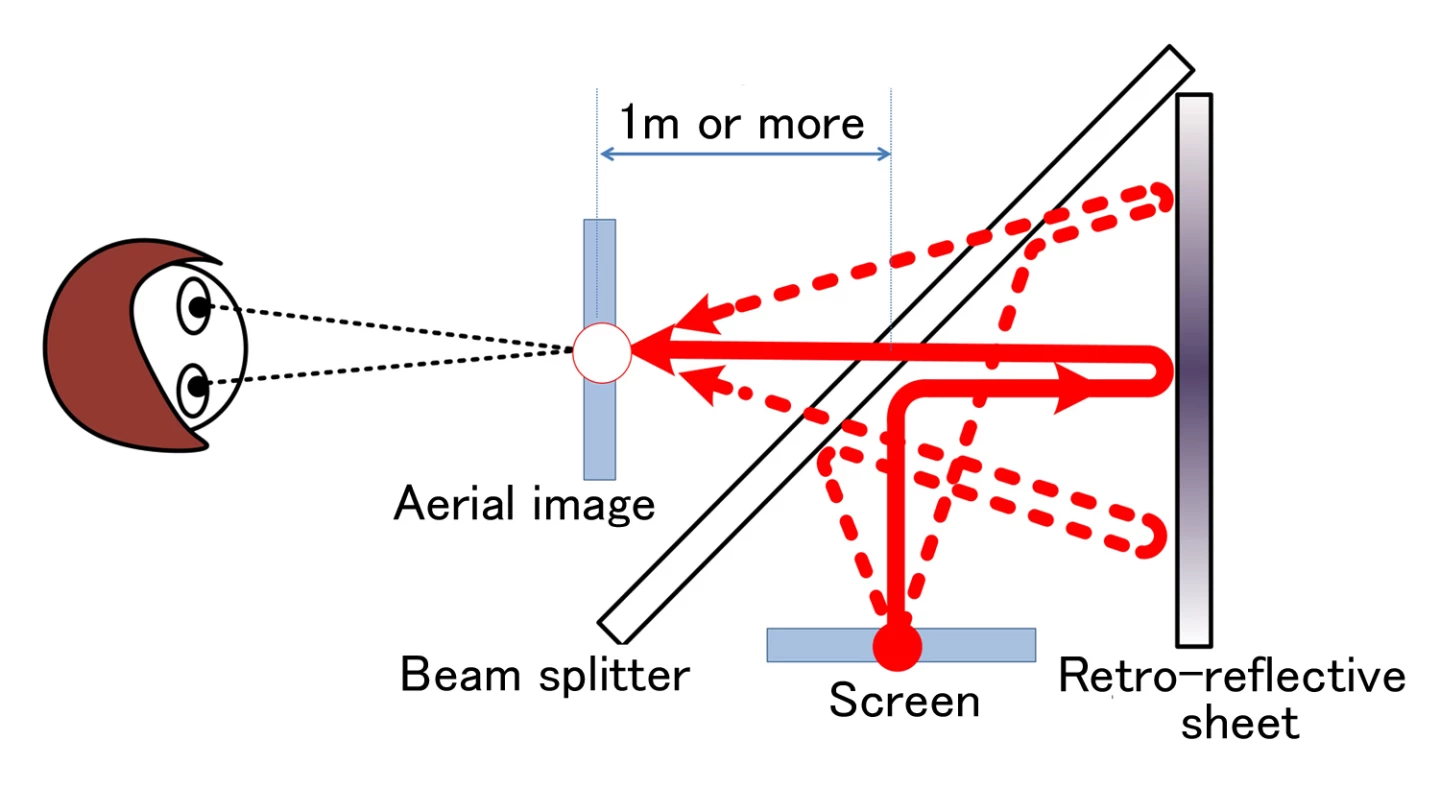As soon as the year 2020, you may be seeing advertising or other imagery floating before you. That's when Mitsubishi Electric hopes to have its "aerial display" technology perfected and commercially available. Already, it's capable of displaying images measuring up to 56 inches (142 cm) diagonally, hovering in the ether.
Here's how the aerial display system works …
The image, which can be a still or video, is displayed on a screen that sits perpendicular (and unseen) to the human viewer. Sitting diagonal to that screen is a beam splitter, which is a glass device that splits beams of light in two.

As a result, when the screen image is reflected off the back of the beam splitter, it becomes two duplicate images. These are in turn reflected off a retro-reflective sheet and through the beam splitter, converging in the air in front of the viewer. This causes the viewer to perceive a single image, dangling before them.
According to the designers, however, people find it hard to focus on such images when there's no way of telling where the image is. With that mind, the system also includes "guide images" that are projected onto walls (or other fixed surfaces) to either side of the floating image. Because viewers "get" where those images are, they can focus on them and then also on the aerial image between them.
The entire display area, including the two guide images, measures 90 inches (229 cm) diagonally.
Similar technology is utilized by the University of Tokyo's HaptoMime system, in which users can seemingly reach into a mid-air display.
Source: Mitsubishi Electric





